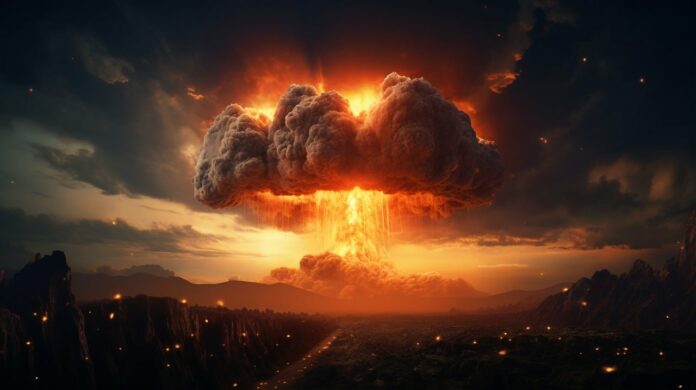In the early 1940s, the world was embroiled in the devastating conflict of World War II. Amidst this chaos, a secretive and ambitious project began to take shape in the United States—a project that would change the course of history and redefine the nature of warfare. This is the story of the Manhattan Project, the codename for the American effort to develop the world’s first nuclear weapons.
The Birth of an Idea
The origins of the Manhattan Project can be traced back to 1938, when German scientists Otto Hahn and Fritz Strassmann discovered nuclear fission. This groundbreaking discovery revealed that splitting the nucleus of a uranium atom released a tremendous amount of energy. The potential for this energy to be harnessed for a weapon was not lost on scientists around the world, including those in the United States.
Prominent physicists like Albert Einstein and Leo Szilard recognized the danger that Nazi Germany could develop a nuclear bomb. In 1939, Einstein and Szilard penned a letter to President Franklin D. Roosevelt, warning him of this possibility and urging the United States to begin its own research into atomic energy. Roosevelt responded by establishing the Advisory Committee on Uranium, which would later evolve into the more expansive and secretive Manhattan Project.
The Assembly of Minds
By 1942, the United States had committed to a full-scale effort to develop an atomic bomb. The project was placed under the direction of the Army Corps of Engineers, specifically within the newly formed Manhattan Engineer District, which is how it came to be known as the Manhattan Project. Brigadier General Leslie R. Groves was appointed to oversee the project, and he quickly sought out the best scientific minds to lead the research.
One of the key figures recruited was J. Robert Oppenheimer, a theoretical physicist from the University of California, Berkeley. Oppenheimer was appointed as the scientific director of the project and set up the primary research and development laboratory in a remote area of Los Alamos, New Mexico. This site became the focal point for assembling the bomb, where scientists worked tirelessly under tight security and strict secrecy.
The Race Against Time
As the war raged on, the urgency of the Manhattan Project grew. The project employed over 130,000 people at its peak and operated facilities across the United States, including Oak Ridge, Tennessee, and Hanford, Washington. Oak Ridge focused on uranium enrichment, while Hanford produced plutonium, another critical material for the bomb.
Scientists at Los Alamos faced numerous technical challenges. They had to figure out how to sustain a chain reaction, how to assemble the bomb in a way that would maximize its explosive power, and how to deliver it effectively. Two bomb designs were developed: “Little Boy,” which used uranium-235, and “Fat Man,” which used plutonium-239.
The Trinity Test
The culmination of years of research and development came on July 16, 1945, in the New Mexico desert. At a site known as the Trinity Test Site, scientists conducted the first successful detonation of a nuclear device. The explosion was more powerful than anyone had anticipated, producing a blinding flash of light and a mushroom cloud that rose 40,000 feet into the sky. The success of the Trinity test confirmed that the United States had the capability to deploy nuclear weapons.
The Use of the Bombs
Less than a month after the Trinity test, on August 6, 1945, a B-29 bomber named Enola Gay dropped the uranium bomb “Little Boy” on the Japanese city of Hiroshima. The explosion obliterated much of the city and killed tens of thousands of people instantly, with many more dying later from radiation exposure. Three days later, on August 9, a second bomb, “Fat Man,” was dropped on Nagasaki, resulting in similarly catastrophic destruction and loss of life.
These bombings led to Japan’s surrender on August 15, 1945, effectively ending World War II. The use of atomic bombs marked a turning point in warfare and demonstrated the devastating power of nuclear weapons.
The Legacy
The Manhattan Project left a complex legacy. It showcased the incredible potential of scientific achievement but also highlighted the profound ethical and moral questions surrounding the use of such destructive technology. The project’s success ushered in the nuclear age, leading to an arms race during the Cold War and ongoing debates about nuclear proliferation and disarmament.
